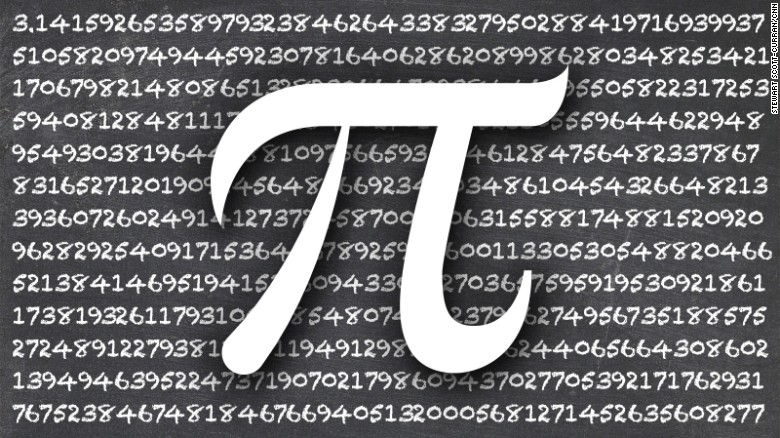Welcome to March 14, or 3.14, commonly known in math geek circles as “Pi Day.”
“Pi” or π is the Greek letter that represents the English letter P. In geometry, the P stands for “perimeter,” the distance around a circle (also known as circumference). Mathematicians have pretty much always known that the circumference of a circle is a little over three times its diameter (distance across, for you non-nerds). The Greek mathematician Archimedes figured out in the third century B.C. that “just over three times” worked out to just under 22/7. That number was later refined to the infinitely-decimaled number that has led to so many math geek challenges:
3.14159265358979323846264338327950288419716939937510582097494459230781640628620899862803482534211706798214808651328230664709384460955058223172535940812848111745028410270193852110555964462294895493038196442881097566593344612847564823378678316527120190914564856692…etc…etc… you get the picture.
In 1706, the English mathematician William Jones used the Greek letter π in place of the P for perimeter, and the practice was popularized by the Swiss mathematician Leonhard Euler in the 1730s. And the rest is history. And if you’re still reading at this point, you are officially a nerd. Congratulations!
Borrowing the first three numbers in pi, March 14, or 3/14 has been designated by math fans as Pi Day. In honor of our favorite non-official math-based holiday, here is some fun Pi humor:
“What do you get if you divide the circumference of a bull by its diameter? Cow Pi.”
“What is the circumference of the sun divided by its diameter? Pi in the sky.”
“The critic watched ‘American Pi’ and gave it 3.14159 stars.”
“I tried to eat a Pi, but couldn’t finish it. It never seemed to end.”
And to conclude…
“Come over to the nerd side…we’ve got Pi!”























